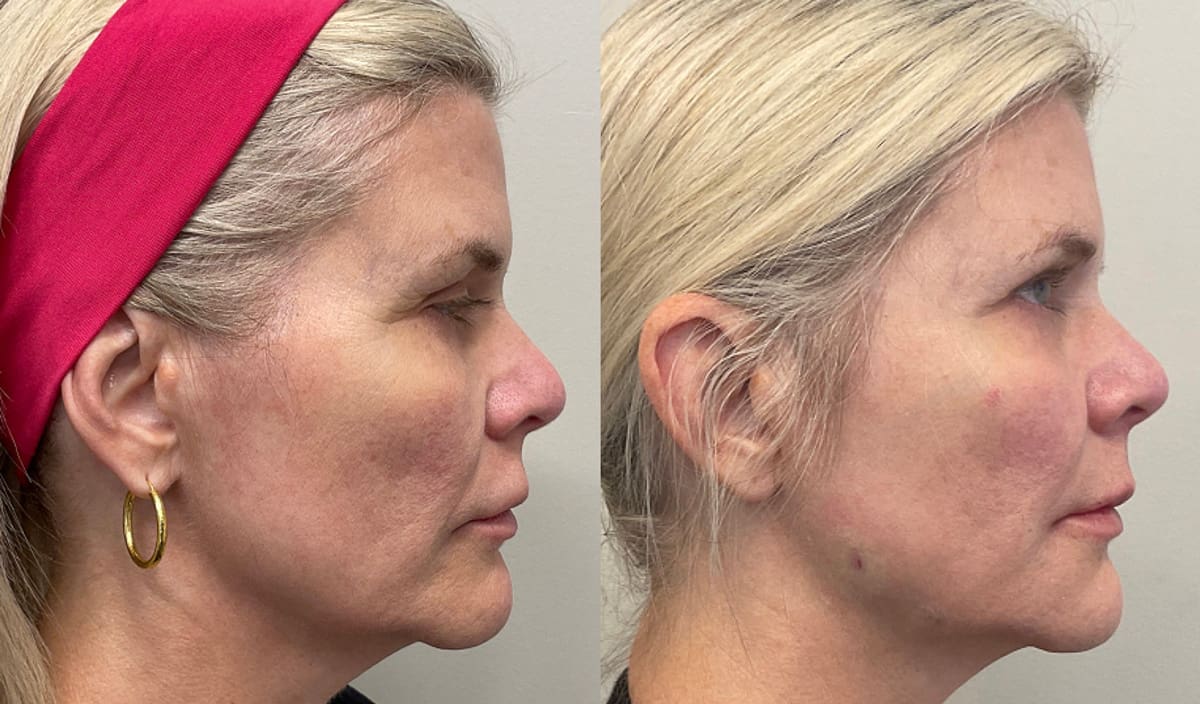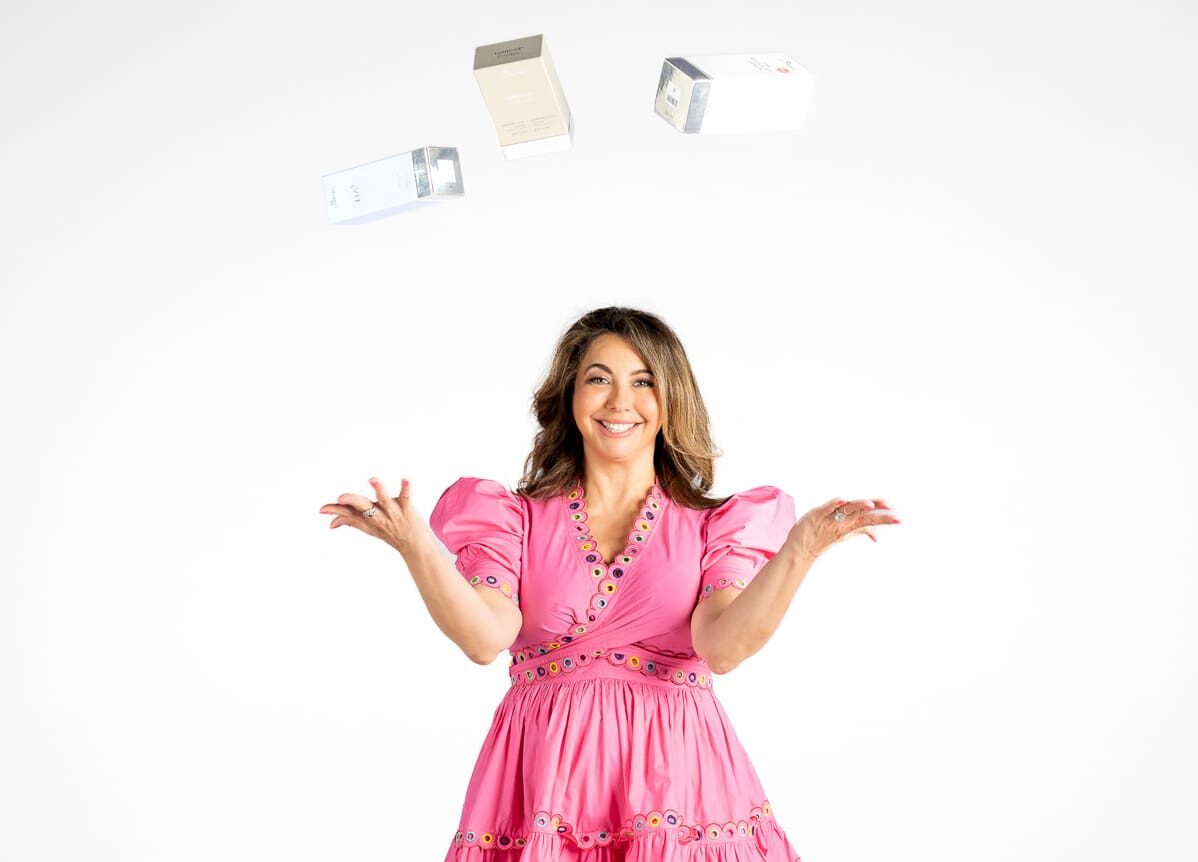Facial Cleansing Brushes for Every Skin Type | As Featured in Allure
Mona S. Foad, M.D., MHS FAAD and Dr. Alexandra Bowles expand upon their insights on how to find the best facial cleansing brush, from their recent Allure feature. From recommendations to tips and tricks, read more about how you can clear every pore on your skin!

What are facial cleansing brushes and how do they work?
“Facial cleansing brushes are a great way to get a deeper clean than just using your hands or a washcloth,” shares Dr. Bowles. There are a few different types of facial cleaning brushes depending on what you’re looking for. The doctors share their thoughts on each kind below.
Silicone brushes:
- Dr. Mona: Silicone brushes are very gentle, with soft bristles to clean your skin. Great for sensitive skin, but they’re usually a bit more expensive. The nice things about silicone brushes are they are easier to clean than regular brushes and are less likely to harbor bacteria or mold.
- Dr. Alexandra: Silicone brushes use soft bristles to cleanse, making them the perfect choice for sensitive skin. They are also really easy to keep clean.
Manual brushes:
- Dr. Mona: Manual brushes are a more affordable option, but they are not as deep-cleaning and can even feel a little rough if you have sensitive skin.
- Dr. Alexandra: Manual brushes are a more affordable option that you use by hand, but they might not be as effective as the rotating or vibrating brushes. Depending on how you use them they can be great options but can sometimes feel a bit rough if used improperly.
Rotating brushes:
- Dr. Mona: Rotating brushes provide a deep clean but if you are not careful these brushes can actually harm your skin. You will also need to replace the heads often and I would not use these if you have sensitive skin.
- Dr. Alexandra: Rotating brushes have heads that spin to exfoliate, so they’re great for oily or combo skin, though they can be a little harsh for sensitive skin and require regular brush replacements. They also can be too harsh and easily overused.
Vibrating brushes:
- Dr. Mona: Vibrating brushes use quick vibrations to access your pores and improve circulation. Great for a thorough but gentle cleanse, but they are definitely on the pricier side. These are less damaging than a rotating brush and can also give you a deep clean. Again make sure that you are using a head that is suitable for your skin type and don’t forget to replace the heads regularly.
- Dr. Alexandra: Vibrating (sonic) brushes use quick vibrations to help lift dirt and oil without rotating, so they’re gentler on the skin but tend to be a bit pricier.
Are they good for your skin?
- Dr. Mona: Facial cleansing brushes can definitely be beneficial for your skin, but it does depend on your skin type and how you use them. The majority of the time, these brushes are very helpful and allow us to get a deeper clean by removing any dirt, oil, or makeup that may have built up throughout the day. These brushes also help to exfoliate the skin in a gentle way. Silicone brushes are the safest to use but may not give you as deep of a clean as a vibrating brush. Make sure you use the kind of brush best suited for your skin type and do not over do it.
- Dr. Alexandra: Absolutely! When used properly, facial cleansing brushes can be great for your skin! Many find that these brushes really help to clear away dirt, makeup, and dead skin cells more effectively than just using their hands.
What are the benefits of using a facial cleansing brush? How does it compare to a cleansing done by hand?
- Dr. Mona: These brushes are designed to clean your skin more deeply than if you were to clean using just your hands. The bristles in combination with movement or vibration can help to remove dirt and oil and clear from your pores more thoroughly while still being gentle enough to avoid irritation. While cleansing with your hands still allows you to reap the benefits of the topical cleanser that you are using, adding in a brush allows you to add a physical cleansing method in addition to just the benefits of the product.
- Dr. Alexandra: Facial brushes add an extra level of exfoliation to help cleanse your pores and remove dirt, oil, and makeup that you build up over time. Plus, the gentle massage helps to boost circulation and gives your skin a healthy glow. Hand washing for your face washing routine is very typical and is ok, but a brush gives you consistent results and can save you some time.
Are there certain skin types that should avoid cleansing brushes? Who benefits most from a cleansing brush.
- Dr. Mona: If your skin is very sensitive, a brush might be too harsh and could further irritate your skin leading to additional breakouts or rashes. For those with sensitive skin, it may be better to use a gentler cleansing brush or only use it occasionally. For those with oily skin or acne-prone skin, a facial brush may be a helpful addition to your skincare routine, as it can cleanse more thoroughly and tackle skin concerns that may be caused from dirt or oil, such as breakouts or enlarged pores.
- Dr. Alexandra: Yes, some skin types should be more careful when it comes to cleansing brushes. For more sensitive skin, rosacea, or acne-prone skin, a facial brush can be too harsh and reactive. That being said, those with oily skin and acne can really benefit from cleansing brushes because they can help remove excess oil and debris.
Are they safe for sensitive skin?
- Dr. Mona: Some people use these brushes without any issues, while others find the bristles way too intense and rough, which can be irritating and cause breakouts. If you have sensitive skin and you want to start using a silicone brush or a facial brush, grab one with really soft bristles and start slowly. Try it twice a week with a gentle cleanser and then increase as your skin tolerates it. Remember that stripping your skin and over-exfoliating is not necessarily a good thing.
- Dr. Alexandra: While some people with sensitive skin might find these brushes helpful for getting that gentle cleanse in, others can end up feeling more irritation. If you have sensitive skin, it’s best to look for a brush specifically designed for sensitive skin, as they typically have softer bristles.
How often should you use one?
- Dr. Mona: How often you use a facial brush really depends on your skin type and how your skin reacts. I recommend starting to use it once or twice a week and pay attention to how your skin looks and feels. Then increase as tolerated. Also start with a gentle cleanser so that if you do get irritated you can decipher that it is from the brush rather than the cleanser.
- Dr. Alexandra: 2 to 3 times a week is a good starting point to see how your skin reacts. If you have oily or acne-prone skin, your skin might be able to handle using it more often. But if your skin is sensitive or dry, sticking to using it once or twice a week is usually a better idea to avoid irritation or overexfoliation.
How do you clean and maintain your facial cleansing brush?
- Dr. Mona: After each use, just rinse the brush under warmer water to get rid of any leftover cleanser and gunk. Let it air dry completely before you stash it away to avoid any bacteria buildup.
- Dr. Alexandra: Make sure to clean your brush after every use by rinsing out the bristles under warm water to get rid of any leftover product. You can also soak the brush in a mixture of warm water and vinegar once a week for a deeper clean. Make sure to let it air dry completely before using.
What facial cleansing brushes do you recommend?
Dr. Mona’s Cleansing Brush Picks:
- FOREO LUNA™ 4 | Smart Facial Cleansing Device: This silicone facial brush touts a customized experience with 3 brush types for balanced, sensitive or combination skin. In addition, there are gentle, regular & deep cleanse modes for different areas of the face & neck with 16 adjustable T-Sonic pulsation intensities. It also claims to be 35x more hygienic than brushes with nylon bristles because of the silicone technology.
- Michael Todd Beauty: Soniclear Elite Patented Antimicrobial Face & Body Sonic Cleansing Brush: The sonic technology allows the brush to oscillate 18,000 micro-movements per minute with 6 speed settings. The 20,000 brush bristles have rounded tips to prevent scratching and irritation, making for a gentle yet effective daily cleansing and exfoliation system for all skin types
- Naturopathica Facial Cleansing Brush: This brush has ultra soft nylon bristles for a more affordable facial brush for those who want to reap the added benefits of using a cleansing tool without all the bells and whistles of an electric facial brush.
Dr. Alexandra’s Cleansing Brush Picks:
- PMD Clean Silicone Brush: This product combines ultra-hygienic silicone with SonicGlow Technology that generates 7,000 vibrations per minute to deeply cleanse pores. It also has four customizable modes, allowing gentler cleaning for sensitive skin types or more intense cleaning.
- Sisley Paris Gentle Brush: This is a gentle manual brush option great for all skin types. It is used by apply cleanser first then performing gentle circular motions on the face, neck, and decollete for a deeper clean.
- FOREO LUNA™ 4 | Smart Facial Cleansing Device: This silicone facial brush touts a customized experience with 3 brush types for balanced, sensitive or combination skin. In addition, there are gentle, regular & deep cleanse modes for different areas of the face & neck with 16 adjustable T-Sonic pulsation intensities. It also claims to be 35x more hygienic than brushes with nylon bristles because of the silicone technology.












